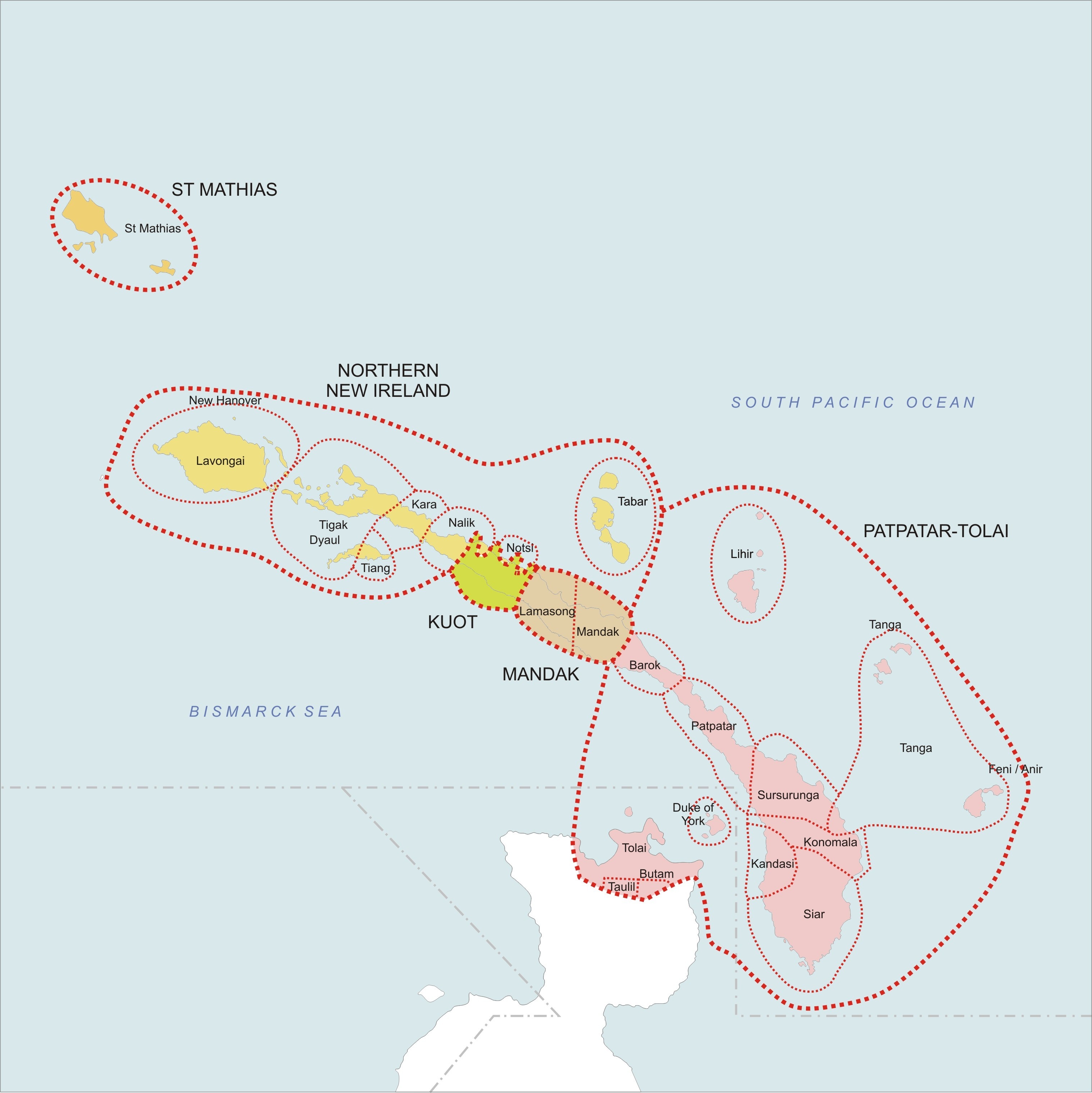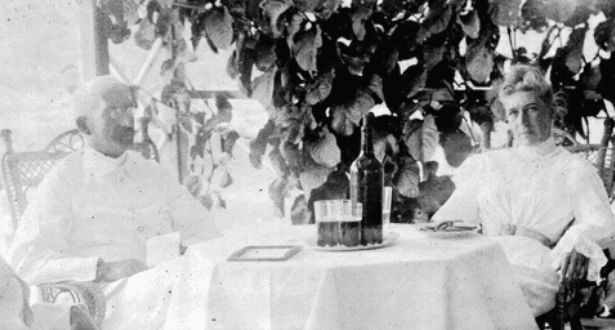|
Boluminski Highway
The Boluminski Highway is the main land transportation route on the island of New Ireland in Papua New Guinea. It runs from the provincial capital of Kavieng for 193 km down the east coast of the island to Namatanai and beyond. The whole highway from Kavieng to Namatanai will be sealed by the end of 2018. Originally named ''Kaiser-Wilhelm-Chaussee'' during the German protectorate, it was renamed in 1921 into ''East Coast Road''. After Papua New Guinea gained independence (1975) the Highway was renamed again, this time after Franz Boluminski who was the German District Officer from 1910 until his death in 1913. He built a large section of the highway by forcing individual villages along the coast to construct and maintain a section. If a section of the road fell into disrepair the village responsible would be punished by having to carry his sulky A sulky is a lightweight cart with two wheels and a seat for the driver, generally pulled by horses or dogs. With horses, ... [...More Info...] [...Related Items...] OR: [Wikipedia] [Google] [Baidu] |
Kavieng
Kavieng is the capital of the Papua New Guinean province of New Ireland and the largest town on the island of the same name. The town is located at Balgai Bay, on the northern tip of the island. As of 2009, it had a population of 17,248. Kavieng is the main port for New Ireland, and is both a trading and tourist destination. Several dive companies operate from the town, as the area is known for its diving, both for natural sites and wrecks dating from the Second World War. There are plane and shipwrecks in Kavieng Harbor itself, as well as several more nearby. The town is serviced by Kavieng Airport, with daily connections to Port Moresby. It lies at one end of the Boluminski Highway which runs of sealed road to Namatanai. Kavieng has all the usual services of a local administrative center: local government offices; shopping; hotels (such as the Kavieng Hotel, the Malagan Beach Resort hotel and the Kavieng Club (the former "colonial club" in the town)); a hospital providing ... [...More Info...] [...Related Items...] OR: [Wikipedia] [Google] [Baidu] |
New Ireland Province
New Ireland Province, formerly New Mecklenburg (german: Neu-Mecklenburg), and Nova Hibernia, is the northeasternmost province of Papua New Guinea. Physical geography The largest island of the province is New Ireland. Also part of the province are numerous smaller islands, including Saint Matthias Group (Mussau, Emirau), New Hanover, Djaul, Tabar Group ( Tabar, Tatau, Simberi), Lihir, Tanga Group (Malendok, Boang), Feni Islands (Ambitle, Babase) and Anir. The land area of the province is around 9 560 km². The sea area within the Exclusive Economic Zone (EEZ) of New Ireland Province is around 230,000 km². Ecology In the early days of the French Revolution while searching for a lost scientific expedition the vessel La Recherche passed by New Ireland. On board was the prominent botanist Jacques-Julien Houtou de Labillardière who noted in his journal fine stands of teak (tectona grandis) trees growing at the southern end of the island. This marks the easter ... [...More Info...] [...Related Items...] OR: [Wikipedia] [Google] [Baidu] |
Namatanai
Namatanai is a town on the island province of New Ireland in Papua New Guinea. It is the second largest settlement on the island and connected to the largest and provincial capital of Kavieng (264 km to the north-west) by the Boluminski Highway. In 2005, Namantanai was estimated to have a population of 1300 people. It is the seat of Namatanai Rural LLG. During German New Guinea German New Guinea (german: Deutsch-Neu-Guinea) consisted of the northeastern part of the island of New Guinea and several nearby island groups and was the first part of the German colonial empire. The mainland part of the territory, called , ..., Namatanai was an important station. Today the Namatanai Hotel sits on top of the old German Station house. On 28 January 1943, Japanese troops on the Goya Maru landed at Namatanai and searched the station but found no Australian troops and departed. On 15 June 1943, Chinese man, Leong Cheung, was publicly shot in town. Namatanai has a small airfield ... [...More Info...] [...Related Items...] OR: [Wikipedia] [Google] [Baidu] |
New Ireland (island)
New Ireland (Tok Pisin: ''Niu Ailan'') or Latangai, is a large island in Papua New Guinea, approximately in area with 120,000 people. It is named after the island of Ireland. It is the largest island of New Ireland Province, lying northeast of the island of New Britain. Both islands are part of the Bismarck Archipelago, named after Otto von Bismarck, and they are separated by Saint George's Channel. The administrative centre of the island and of New Ireland province is the town of Kavieng located at the northern end of the island. While the island was part of German New Guinea, it was named Neumecklenburg ("New Mecklenburg"). Geography The island is part of the Bismarck Archipelago and is often described as having the shape of a musket. New Ireland is surrounded by the Bismarck Sea in the southwest and by the Pacific Ocean in the northeast. For much of its in length, the island's width varies between less than to , yet the central mountainous spine is very steep an ... [...More Info...] [...Related Items...] OR: [Wikipedia] [Google] [Baidu] |
Papua New Guinea
Papua New Guinea (abbreviated PNG; , ; tpi, Papua Niugini; ho, Papua Niu Gini), officially the Independent State of Papua New Guinea ( tpi, Independen Stet bilong Papua Niugini; ho, Independen Stet bilong Papua Niu Gini), is a country in Oceania that comprises the eastern half of the island of New Guinea and its offshore islands in Melanesia (a region of the southwestern Pacific Ocean north of Australia). Its capital, located along its southeastern coast, is Port Moresby. The country is the world's third largest island country, with an area of . At the national level, after being ruled by three external powers since 1884, including nearly 60 years of Australian administration starting during World War I, Papua New Guinea established its sovereignty in 1975. It became an independent Commonwealth realm in 1975 with Elizabeth II as its queen. It also became a member of the Commonwealth of Nations in its own right. There are 839 known languages of Papua New Guinea, one of ... [...More Info...] [...Related Items...] OR: [Wikipedia] [Google] [Baidu] |
Franz Boluminski
Franz Boluminski (12 November 1863 – 28 April 1913) was a German colonial administrator. Boluminski was born in Graudenz, Kingdom of Prussia. He served in the German Army in German East Africa and in 1894 went to work for the German New Guinea Company at Astrolabe Bay near modern-day Madang in Papua New Guinea. In March 1899 he transferred into the German colonial service and was posted to new station of Kavieng on the island of New Ireland. In 1910 he was promoted to district officer. His major feat was the construction of a road along the north-eastern coast of the island. He made each village along the coast construct a section and then maintain it. The road eventually became known as the Boluminski Highway, named in his honour. At the same time he established copra plantations connected to the highway and this made New Ireland one of the most profitable parts of German New Guinea German New Guinea (german: Deutsch-Neu-Guinea) consisted of the northeastern pa ... [...More Info...] [...Related Items...] OR: [Wikipedia] [Google] [Baidu] |
Sulky
A sulky is a lightweight cart with two wheels and a seat for the driver, generally pulled by horses or dogs. With horses, a sulky is used for harness racing. The term is also used for an arch-mounted cart on wheels or crawler tracks, used in logging, or other types of vehicle having wheels and usually a seat for the driver, such as a plough, lister or cultivator. Horse sulky A sulky for horses is a lightweight two-wheeled, single-seat cart that is used as a form of rural transport in many parts of the world. A special development of this is now used in most forms of harness racing in Argentina, Australia, Canada, France, the United States and New Zealand, including both trotting and pacing races. They are reputedly called "sulkies" because the driver must prefer to be alone."The Encyclopaedia of Driving" 1979, by Sallie Walrond Race sulkies come in two categories, * Traditional symmetrical sulkies * Asymmetric or "offset" sulkies An "improved sulky" with pneumatic tire ... [...More Info...] [...Related Items...] OR: [Wikipedia] [Google] [Baidu] |




.jpg)